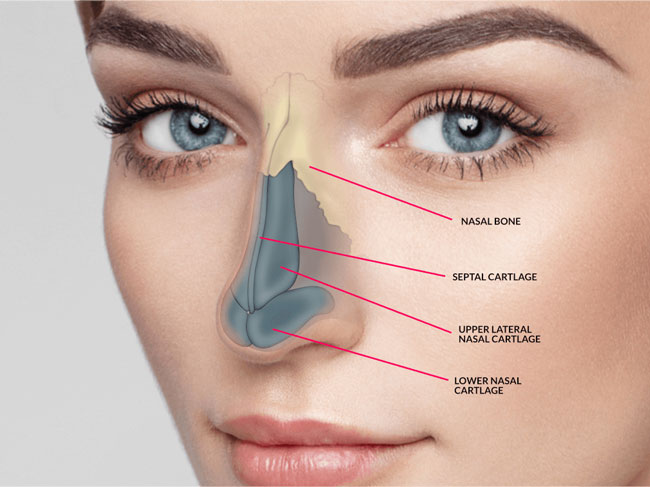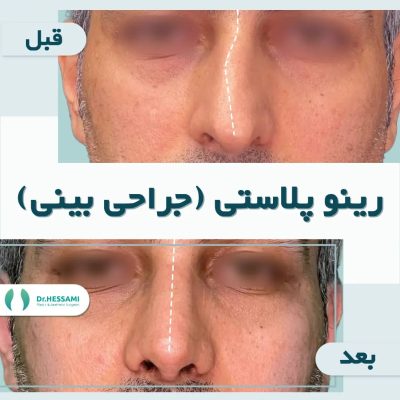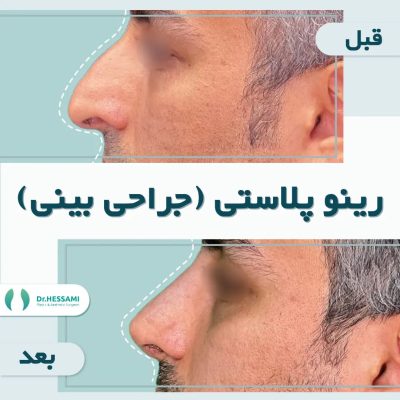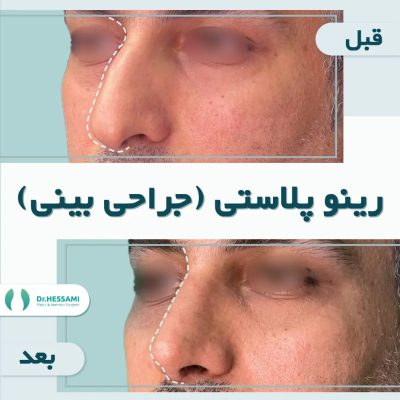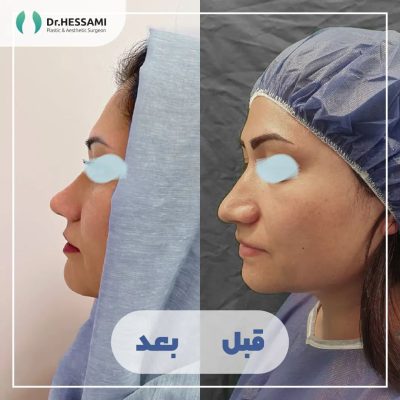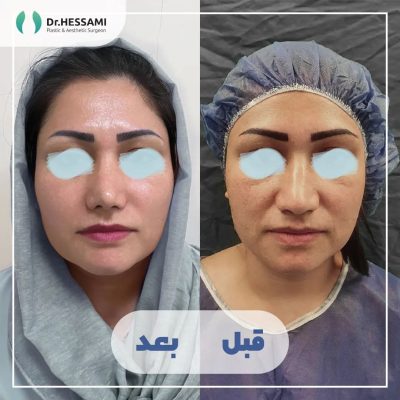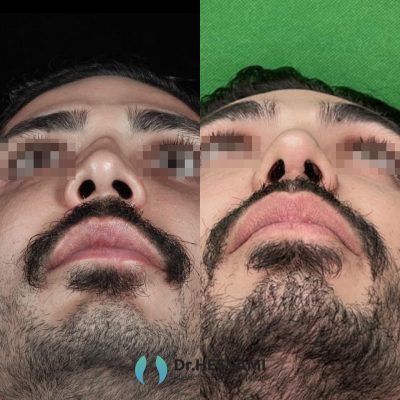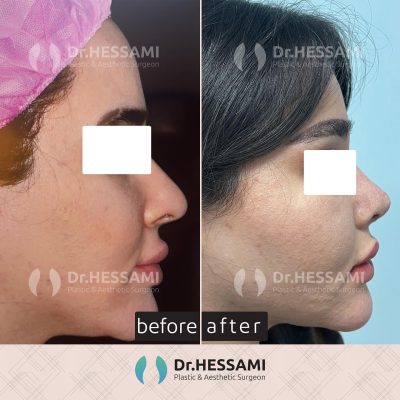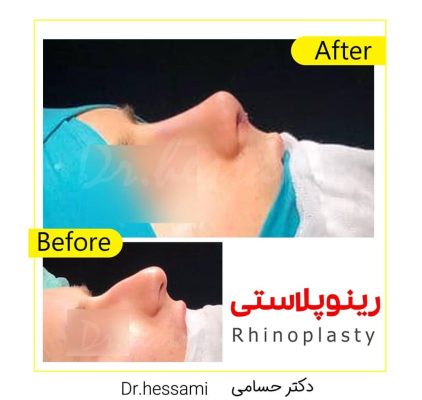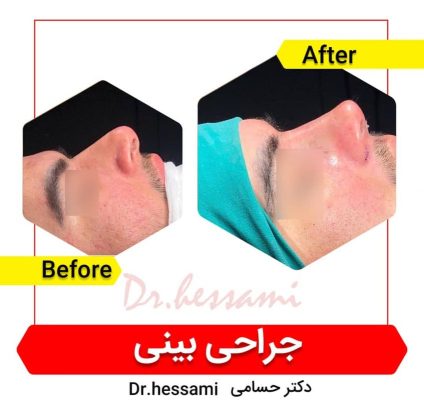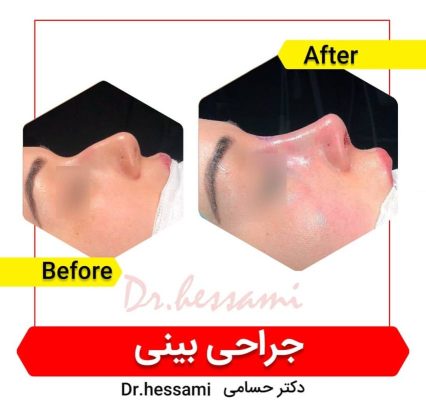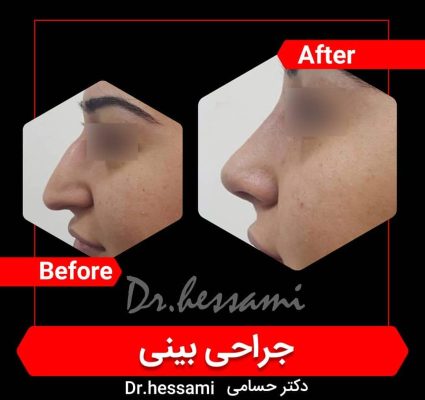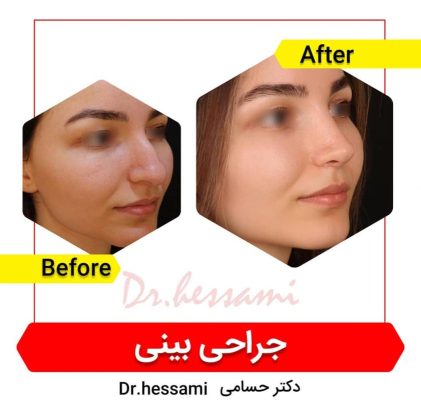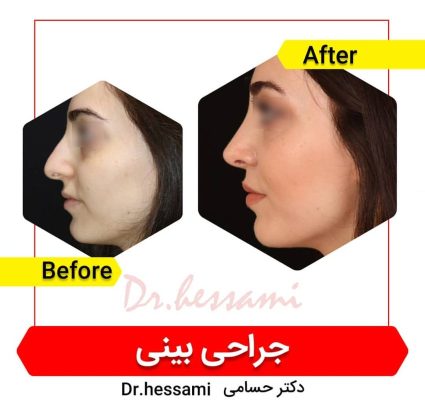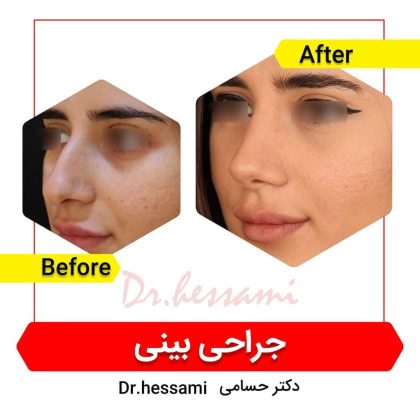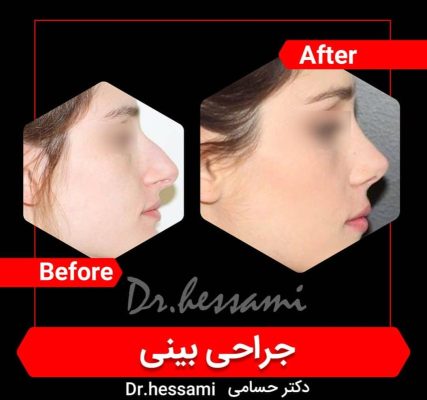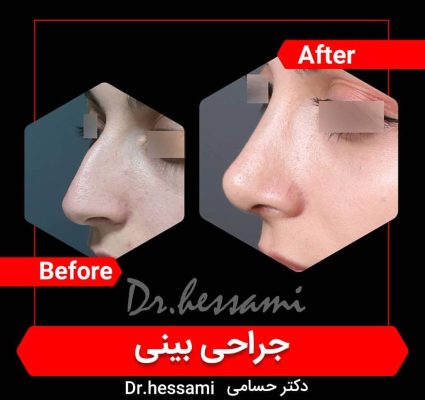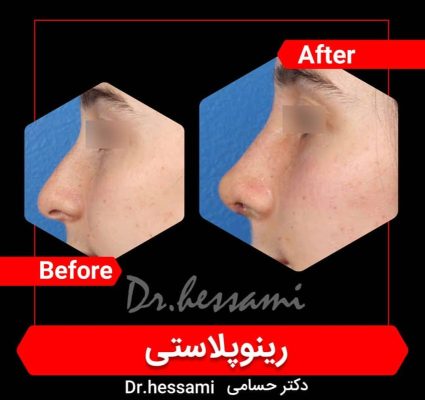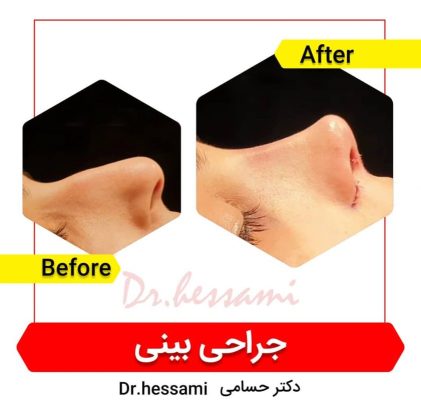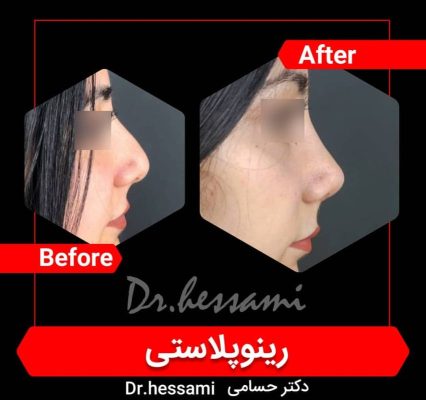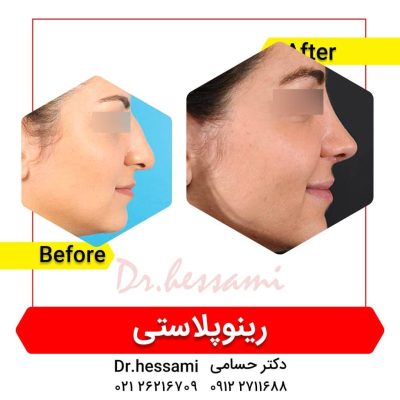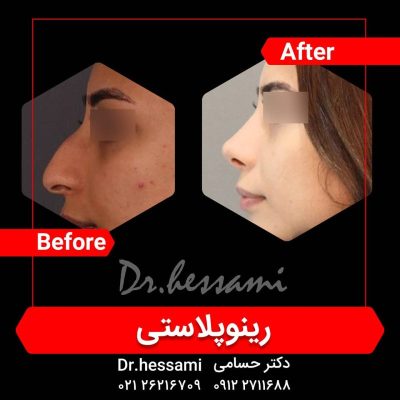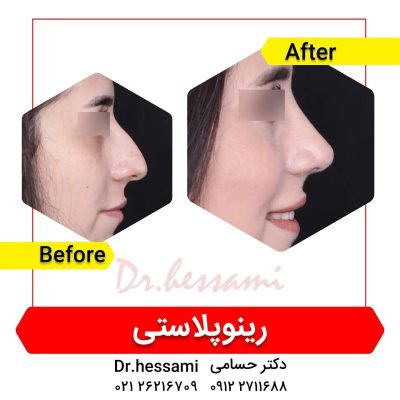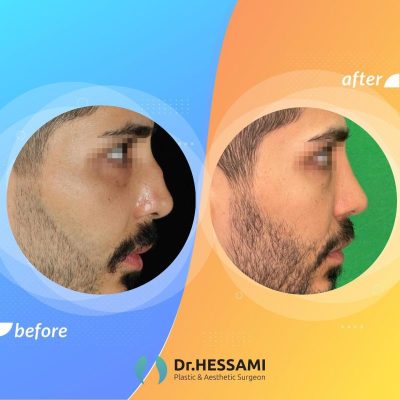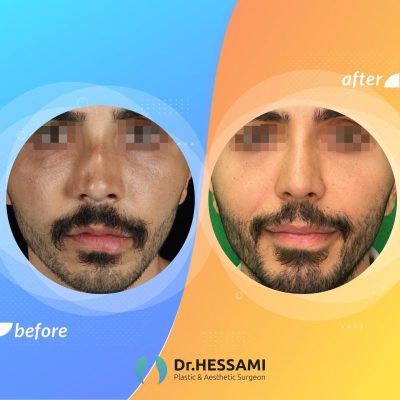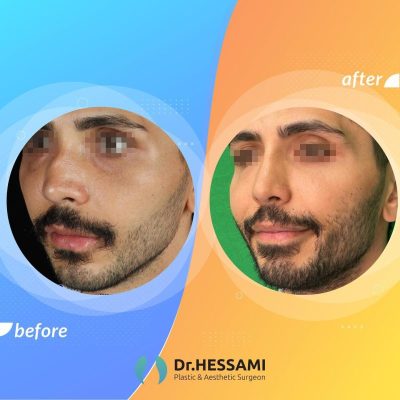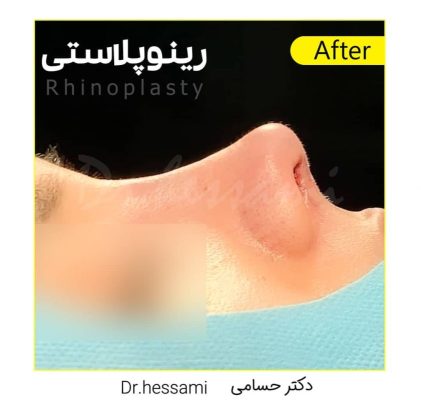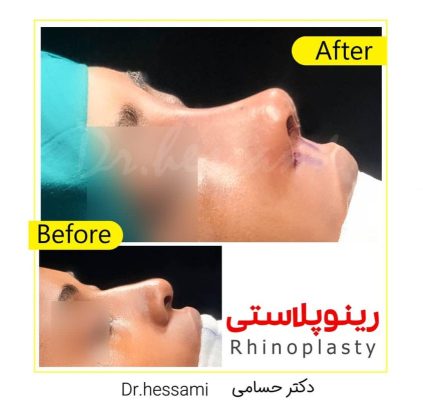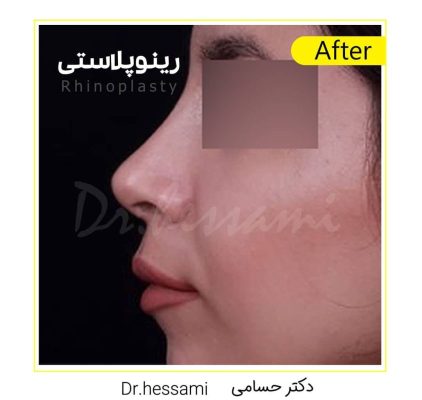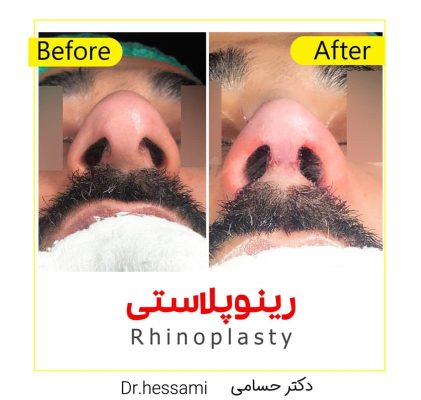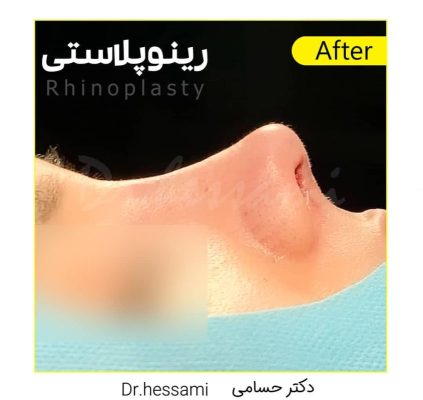Rhinoplasty in Iran
Rhinoplasty in Iran , often referred to as a “nose job,” is a type of plastic surgery that changes the shape or functionality of the nose. It’s one of the most common types of plastic surgery procedures. Rhinoplasty can be done for various reasons, such as to correct breathing problems related to the nose or to improve its appearance.
Types of Rhinoplasty in Iran
There are two main types of rhinoplasty:
1. Cosmetic Rhinoplasty: This type of rhinoplasty is performed to change the nose’s appearance in some way. This might involve changing the size, shape, or angle of the nose. Cosmetic rhinoplasty can help improve balance and proportions of the face.
2. Functional Rhinoplasty: This type of rhinoplasty is performed to improve the functioning of the nose. For example, it may be used to correct a deviated septum, which can cause breathing difficulties.
Procedure
Rhinoplasty in Iran is usually an outpatient procedure, which means you won’t need to stay overnight at the hospital. It can be done under local or general anesthesia, depending on the complexity of the surgery.
During the procedure, the surgeon makes cuts within the nostrils. In some cases, the surgeon may also make cuts across the base of the nose. Then, the surgeon reshapes the inner bone and cartilage to improve the appearance or function of the nose.
If you want to operate in Tehran, Dr Hessami, click the button below and follow the stepsStart your therapeutic journey
Risks
Like any surgery, rhinoplasty carries some risks. These include:
– Bleeding
– Infection
– Unfavorable scarring
– Difficulty breathing through the nose
– Unsatisfactory nasal appearance
– Need for revision surgery
Recovery
Recovery from rhinoplasty varies from person to person. Most people will wear a nasal splint for the first week. You can expect swelling and some bruising around the eyes after surgery that will begin to improve after the third day. It can, though, last up to two weeks.
To reduce swelling and help the nose heal properly, patients are often advised to avoid strenuous activity for a few weeks after surgery. Complete healing and final results might take several months to a year as residual swelling slowly resolves.
Remember, it’s important to have realistic expectations and discuss potential outcomes with your surgeon beforehand.
Consultation with a Surgeon
Before getting rhinoplasty, you’ll typically have a consultation with the surgeon. During this consultation, you’ll discuss your goals and the surgeon will explain what can be achieved with surgery. They’ll also go over the risks and potential complications, so you can make an informed decision about whether to proceed with the surgery.
If you’re considering rhinoplasty, it’s crucial to choose a qualified and experienced surgeon to ensure the best possible results.
Types of rhinoplasty in Iran
Rhinoplasty in Iran is a surgical procedure that modifies the shape or function of the nose. There are several different types of rhinoplasty, each designed to address specific issues or concerns. Here are some of the most common types:
1. Cosmetic Rhinoplasty: This is performed to alter the appearance of the nose. The changes can be minor or significant, depending on the patient’s desires. This could involve altering the size, changing the shape of the tip or bridge, narrowing the nostrils, or changing the angle between the nose and upper lip.
2. Functional Rhinoplasty: This aims to improve the function of the nose, usually related to breathing issues. This might involve correcting a deviated septum (Septoplasty), reducing turbinates, or addressing other structural problems that impede airflow.
3. Revision Rhinoplasty: Also known as secondary rhinoplasty, this is performed to correct issues arising from a previous rhinoplasty. These issues could be aesthetic or functional, or both. Revision rhinoplasty is often considered more complex due to the alterations already made to the nose’s normal anatomy.
4. Ethnic Rhinoplasty: This is a term used to describe rhinoplasty that takes into account ethnic characteristics and aesthetics. It aims to modify the nose’s shape or size while maintaining and respecting the patient’s ethnic identity.
5. Reconstructive Rhinoplasty: This is done to restore the function or appearance of the nose following trauma, illness, or congenital defects. It might involve the use of grafts or synthetic materials to rebuild the nasal structure.
Each type of rhinoplasty requires a different set of techniques and approaches. The type that’s suitable for a patient depends on their specific needs, goals, and circumstances. It’s important to have a thorough consultation with a qualified and experienced plastic surgeon to discuss the appropriate options.
Types of nose in rhinoplasty
Rhinoplasty in Iran can be tailored to address a variety of nose shapes and structures. A person’s nose can be classified based on its distinct characteristics, and the type of rhinoplasty performed may depend on these specific features. Here are some common nose types that patients often seek to modify through rhinoplasty in Iran :
1. Hump or Dorsal Hump Nose: This refers to a nose with a noticeable bump on its bridge. The hump can be made of bone, cartilage, or both. A rhinoplasty procedure for this type of nose often involves reducing the hump to create a smoother, more streamlined nasal profile.
2. Bulbous Tip Nose: This type of nose has a rounded, bulb-like tip. Rhinoplasty for a bulbous tip usually involves reshaping the cartilage in the nose tip to achieve a more defined or refined appearance.
3. Wide or Broad Nose: A wide or broad nose has a nasal bridge and/or nostrils that are wider than average. Rhinoplasty can narrow the width of the nose and nostrils to bring them into better proportion with the rest of the facial features.
4. Long Nose: A long nose has an extended length that may throw off the balance of the face. Rhinoplasty can be used to reduce the scale of the nose, creating a more harmonious balance with other facial features.
5. Upturned or “Piggy” Nose: This type of nose has a tip that tilts upwards, sometimes revealing the nostrils. Rhinoplasty can adjust the angle of the tip to make it less upturned.
6. Crooked or Asymmetrical Nose: This refers to a nose that doesn’t run straight down the middle of the face. This could be due to a deviated septum or trauma. Rhinoplasty for a crooked nose may involve straightening the nasal structure and correcting any functional issues.
7. Hooked Nose: This type of nose curves out and down, resembling a hook. Rhinoplasty for a hooked nose often involves straightening the bridge and lifting the tip.
8. Flat Nose: A flat nose usually refers to a nose with a low or wide bridge and wide nostrils, which is common in many Asian and African ethnicities. Rhinoplasty can add height to the bridge or refine the nostrils, while still respecting and maintaining the patient’s ethnic characteristics.
Each nose is unique, and the best results in rhinoplasty are achieved when the procedure is personalized to the patient’s individual anatomy, aesthetic goals, and cultural or ethnic background. It’s important to discuss your expectations thoroughly with a qualified plastic surgeon.
Bone nose surgery
Bone nose surgery, often referred to as rhinoplasty, is a procedure that can alter the shape, size, or functionality of the nose. When the procedure involves the nasal bones, it’s typically to modify the nose’s width or straighten a crooked nose. Here are some aspects of bone nose surgery:
1. Osteotomy: This is a surgical procedure where the nasal bones are intentionally broken and reshaped. This is usually performed in cases where the width of the nasal bridge needs to be altered (either narrowed or widened) or if the nose is crooked or asymmetrical due to previous trauma.
2. Dorsal Hump Reduction: If the patient has a prominent dorsal hump (the bump on the bridge of the nose that can give a ‘hooked’ appearance), the surgeon may shave down the bone and cartilage to create a smoother profile.
3. Deviated Septum Correction (Septoplasty): This procedure involves straightening the septum — the wall of bone and cartilage that separates the nostrils. A deviated septum can block one side of your nose and reduce airflow, causing difficulty breathing.
All of these procedures involve careful manipulation of the bone in the nose. They require a skilled and experienced surgeon, as they are more complex and carry a higher risk of complications compared to soft tissue procedures.
After the surgery, the patient can expect swelling and bruising, especially around the eyes. There may be nasal packing or a splint placed on the nose to protect the bones while they heal. The final result may not be visible until up to a year post-surgery, once all the swelling has fully subsided.
As with any surgical procedure, bone nose surgery carries some risks and potential complications, including infection, bleeding, nasal obstruction, and dissatisfaction with the aesthetic outcome. It’s crucial to discuss these potential risks and your aesthetic goals with your surgeon during the consultation process.
meaty nose job
When people refer to a “meaty” or “bulbous” nose, they’re typically talking about a nose that has a large, rounded, or bulb-like tip. This is often due to excess soft tissue, thick skin, and/or larger lower lateral cartilages in the nose tip. A rhinoplasty, or “nose job,” can be performed to reshape and refine a meaty nose, aiming to create a more balanced and proportionate appearance.
Here’s a general idea of how this type of rhinoplasty might be performed:
1. Consultation: As with any surgical procedure, the process starts with a consultation. The surgeon will examine your nose, discuss your goals for the surgery, and explain the procedure, risks, and recovery process.
2. Surgery: On the day of surgery, general or local anesthesia is administered. The surgeon makes incisions (usually inside the nostrils to minimize visible scarring), and then reshapes the cartilage and tissue of the nose. For a bulbous or meaty nose, the surgeon may reduce the size of the nasal tip cartilages and remove some fatty tissue. In some cases, they may also thin the skin to achieve a more refined look.
3. Recovery: After the surgery, you’ll likely wear a nasal splint for about a week. You can expect some swelling and bruising, which should gradually diminish over the next few weeks. Most people can return to work or school within 1-2 weeks, but full healing and the final result can take up to a year or more to appear.
Rhinoplasty in Iran for a meaty or bulbous nose can be quite complex, as the surgeon needs to maintain the nose’s structural integrity while achieving the desired aesthetic result. It’s essential to choose a board-certified plastic surgeon experienced in rhinoplasty for the best outcomes.
Broken nose operation
A broken nose, or nasal fracture, is a crack or break in the bones of your nose. This is often due to trauma or impact to the face. Symptoms may include swelling, pain, bruising, difficulty breathing, or an obvious deformity. Sometimes, a surgical procedure may be necessary to repair a broken nose. This type of operation is known as a nasal fracture reduction or a septorhinoplasty.
Here are the general steps involved in a broken nose operation:
1. Consultation and Diagnosis: If you suspect you have a broken nose, it’s important to consult a healthcare professional as soon as possible. They can examine your nose, discuss your symptoms, and possibly order imaging tests like X-rays or CT scans to confirm the fracture.
2. Non-Surgical Treatment: If the fracture is minor and your nose hasn’t been displaced (moved out of place), you may not need surgery. Instead, the doctor can recommend treatments like cold compresses, pain relievers, and nasal decongestants to help manage your symptoms while your nose heals.
3. Surgical Treatment: If the bones in your nose have been significantly displaced, or you have a deviated septum or breathing problems, you may need surgery. This typically isn’t performed immediately after the injury. Instead, the surgeon usually waits until the swelling has gone down – often about a week after the injury.
– Nasal fracture reduction: This is a procedure where the surgeon manually realigns the broken bones. This is often done under local or general anesthesia. The surgeon might use special instruments to carefully move the bones back into place.
– Septorhinoplasty: If you have a severe fracture or a deviated septum, you may need a more complex surgery known as a septorhinoplasty. This involves adjusting the nasal bones and correcting the septum (the piece of cartilage that separates the nostrils).
4. Recovery: After the surgery, the doctor may place a splint on your nose to hold the bones in place while they heal. You may also have nasal packing (gauze or other material placed in your nostrils). You’ll likely have some swelling and bruising for a few weeks. Full recovery can take a few weeks to a few months, depending on the severity of the fracture and the type of surgery.
As with any surgery, a broken nose operation carries potential risks, including infection, bleeding, or adverse reactions to anesthesia. In some cases, you may not be satisfied with the appearance of your nose after it heals, and you might need a second surgery (revision rhinoplasty). It’s important to discuss these risks and your expectations with your surgeon.
Secondary rhinoplasty
Secondary rhinoplasty, also known as revision rhinoplasty, is a surgical procedure performed to correct issues that persist or develop after an initial rhinoplasty. These issues can be functional, such as breathing difficulties, or cosmetic, such as dissatisfaction with the appearance of the nose.
This type of rhinoplasty is considered more complex than a primary rhinoplasty for several reasons:
1. Altered Anatomy: The normal anatomy of the nose may have been significantly altered during the first operation, making the secondary procedure technically more challenging.
2. Scar Tissue: The presence of scar tissue from the initial surgery can complicate revision surgery. Scar tissue is harder and less flexible than normal tissue, which can make reshaping the nose more difficult.
3. Reduced Material: If cartilage from the nose was removed during the first surgery, there may be less material to work with during the revision. In this case, the surgeon may need to use grafts from elsewhere in the body (like the ear or ribs) or use synthetic materials.
Here are the general steps involved in a secondary rhinoplasty:
1. Consultation: As with any surgery, a secondary rhinoplasty begins with a consultation. The surgeon will discuss your goals for the operation, examine your nose, and review your medical history. It’s important to have realistic expectations about what can be achieved with a revision rhinoplasty.
2. Surgery: The specific techniques used during a secondary rhinoplasty can vary widely based on what needs to be corrected. The surgeon may need to reconstruct certain areas, remove excess tissue, or add additional material to achieve the desired result.
3. Recovery: After surgery, you’ll likely have a nasal splint to support the new shape of your nose. Swelling and bruising are common, and full recovery can take longer than the initial rhinoplasty – up to a year or more to see the final result.
4. Risks: Secondary rhinoplasty carries similar risks to the initial surgery, including infection, bleeding, and adverse reactions to anesthesia. There’s also a chance that the patient may still be unsatisfied with the result, or that breathing difficulties may persist or worsen.
Because secondary rhinoplasty is a more complex procedure, it’s crucial to choose a surgeon who is highly experienced in this type of surgery.
Ethnic nose job
Ethnic rhinoplasty, also known as ethnic nose job, is a term used to describe a nose reshaping surgery that takes into consideration the patient’s ethnic background and features. This type of surgery aims to enhance the nose’s appearance while preserving the distinctive characteristics that contribute to the individual’s ethnic identity.
Different ethnic groups have unique nasal characteristics. For example, African and Afro-Caribbean individuals often have wider nostrils and a less pronounced nasal bridge, while Asian individuals might have a flatter profile and wider base. Middle Eastern individuals often have a pronounced dorsal hump and a longer, droopier nasal tip.
Here are the general steps involved in an ethnic rhinoplasty:
1. Consultation: The process begins with a consultation where the surgeon will discuss your goals for the surgery and examine your nose. It’s important to have a clear understanding of the patient’s aesthetic goals and how they relate to their ethnic identity.
2. Surgery: The specific techniques used during an ethnic rhinoplasty can vary widely based on the patient’s desired outcome. For instance, a surgeon might use grafts to build up a flat nasal bridge, narrow wide nostrils, or reduce a prominent nasal hump. The goal is to create balance and symmetry while respecting and maintaining the patient’s ethnic characteristics.
3. Recovery: Recovery from an ethnic rhinoplasty is similar to any other rhinoplasty procedure. You’ll likely experience some swelling and bruising, and there will be a period of downtime while you heal. The final results of the surgery may not be fully visible for up to a year after the procedure.
4. Risks: As with any surgical procedure, ethnic rhinoplasty carries potential risks, including infection, bleeding, and adverse reactions to anesthesia. There’s also a chance that the patient may not be satisfied with the results.
It’s essential to choose a surgeon who is experienced in ethnic rhinoplasty and has a deep understanding of the subtle nuances of different ethnic features. The goal should always be to enhance the patient’s natural beauty and not to erase or overly westernize their ethnic features.
Nasal polyp surgery
Nasal polyps are soft, painless, non-cancerous growths that can form on the lining of your sinuses or nasal passages. They hang down like teardrops and can result from chronic inflammation due to asthma, recurring infection, allergies, or certain immune disorders. Large or numerous polyps can lead to breathing problems, loss of sense of smell, and frequent sinus infections.
When medication fails to treat nasal polyps, or symptoms are severe, surgery may be recommended. Here’s a brief overview of nasal polyp surgery procedures:
1. Polypectomy: This is a common procedure for removing smaller polyps. It’s usually performed under local anesthesia. The surgeon inserts a small mechanical suction device or a microdebrider (an instrument that cuts and extracts tissue) into the nostrils and suctions out the polyps.
2. Endoscopic Sinus Surgery: For larger or more numerous polyps, an endoscopic sinus surgery may be performed. In this procedure, the surgeon uses a thin, flexible tube with a light and camera at one end (an endoscope) to visualize the nasal passages and sinuses. Special instruments are then used to remove the polyps and any other obstructions.
The goal of surgery is to remove polyps, correct problems with your sinuses that make them prone to inflammation and polyp development, and improve sinus drainage.
Here’s what you might expect after surgery:
– Recovery: Recovery time can vary based on the extent of the procedure. You may experience some nasal congestion and minor bleeding for a few days after surgery.
– Follow-up care: After surgery, you’ll need regular follow-up care to monitor for any signs of polyp recurrence or new growths.
– Medication: You may be prescribed medication (like corticosteroid nasal sprays) after surgery to help reduce inflammation and prevent the recurrence of nasal polyps.
As with any surgery, nasal polyp surgery carries potential risks, such as infection, bleeding, and a reaction to the anesthesia. There’s also a chance that the polyps may return or that your sense of smell won’t improve after surgery. It’s important to discuss these potential risks and your treatment options with your healthcare provider.
Septorhinoplasty nose surgery
Septorhinoplasty is a surgical procedure that combines two types of surgery – septoplasty and rhinoplasty – to correct both functional and cosmetic issues with the nose.
Here’s a brief overview of these two components:
1. Septoplasty: This is a surgery that corrects a deviated septum. The septum is the thin wall of cartilage that separates the two nostrils. If it’s deviated, or shifted to one side, it can block the nasal passage and cause breathing difficulties.
2. Rhinoplasty: This is a cosmetic surgery that reshapes the nose to improve its appearance. It can modify the size, shape, and proportions of the nose.
A septorhinoplasty is often performed when a patient has both a deviated septum and a desire for cosmetic changes to the nose. The exact process can vary considerably based on the individual’s needs, but here’s a general idea of what the procedure might involve:
1. Consultation: During the consultation, the surgeon will discuss your goals for the operation, examine your nose, and review your medical history.
2. Surgery: On the day of the surgery, you’ll be given anesthesia. The surgeon will then make incisions within the nostrils or across the columella (the thin strip of tissue that separates the nostrils). The surgeon can then reshape the internal and external structures of the nose as needed. For instance, they might straighten the septum, reduce a hump on the nasal bridge, or refine the nasal tip.
3. Recovery: After the surgery, you’ll likely have a nasal splint to support the new shape of your nose. Swelling and bruising are common, and there will be a period of downtime while you heal. The final results of the surgery may not be fully visible for up to a year after the procedure.
4. Risks: As with any surgical procedure, septorhinoplasty carries potential risks, including infection, bleeding, and adverse reactions to anesthesia. Other risks may include numbness, nosebleeds, scarring, breathing difficulties, or dissatisfaction with the cosmetic results.
Choosing a board-certified surgeon with experience in septorhinoplasty can help ensure the best outcomes. It’s important to have clear, open discussions with your surgeon about your expectations and potential risks before the procedure.
THE PRICE OF RHINOPLASTY IN TEHRAN
- The cost of nose surgery in Tehran is between 1000 and 3000 Euros
- There is usually no need to stay in the hospital and you will be discharged 4 hours after the surgery.
- If you are not a resident of Tehran, the duration of stay is 8 days
First time rhinoplasty cost |
1200 euros |
including surgeon + hospital fee | |
| Other costs related to Rhinoplasty in Tehran | |||
| Cost of blood test | Between 10 and 15 euros | The difference depends on the type of blood test | |
| The cost of ultrasound or nasal CT | Between 40 and 60 euros | According to the surgeon’s order | |
| The cost of consultation with a cardiologist | Between 20 and 40 euros | For people over 40 or heart patients | |
| The cost of medicine and other health items | Between 20 and 40 euros | ||
| Cost of plastic surgery in Tehran – Iran – optional | |||
| Nurse fee (per night) | 30 euros | If you are traveling alone | |
| The cost of changing the dressing by the nurse | 15 euros | ||
Attention:
- If you have an underlying disease or medication, let us know
- If you have already had rhinoplasty or a broken nose, the cost of the surgery will increase slightly
- Let us know if you have anemia or other blood disorders
- If you want ethnic rhinoplasty and need to reconstruct the nose with cartilage, the cost of the nose will increase.
What to expect from rhinoplasty
Undergoing a rhinoplasty, or “nose job,” can be a significant decision. Knowing what to expect before, during, and after the procedure can help you prepare and ensure a smoother recovery process.
Before Surgery
1. Consultation: During the consultation, your surgeon will discuss your goals, review your medical history, and examine your nose both inside and out. They may also take photographs and use computer modeling to show you what you can expect your nose to look like after surgery.
2. Preparation: Prior to surgery, you’ll receive instructions about what you should do to prepare. This may include guidelines on eating, drinking, smoking, taking or avoiding certain vitamins and medications.
During Surgery
3. Procedure: Rhinoplasty is typically performed as an outpatient procedure, meaning you go home the same day. You’ll receive anesthesia to ensure you’re comfortable during the operation. The specific steps of the procedure will depend on your individual case, but generally, the surgeon makes incisions inside the nostrils or across the base of the nose, then reshapes the bone, cartilage, and soft tissues of the nose.
After Surgery
4. Recovery: After surgery, you’ll be monitored in a recovery room. Your nose may be packed with gauze or have a splint on the outside to support the new shape as it heals. You can expect to have swelling and bruising around the eyes and nose, which typically improves within 10 to 14 days.
5. Follow-up Visits: You’ll have follow-up visits with your surgeon to remove packing or stitches and to monitor your healing process. Swelling may take a few months to fully resolve, and the final shape of your nose may not be evident for up to a year or more.
6. Results: Most people are satisfied with their surgery, but it’s important to have realistic expectations. It can take time to adjust to your new look, and minor changes may continue to occur for up to a year.
Risks
Like any surgery, rhinoplasty carries risks, including bleeding, infection, adverse reactions to anesthesia, or dissatisfaction with the aesthetic outcome. More specific risks related to rhinoplasty include difficulty breathing through the nose, persistent pain or numbness, and asymmetry in nostril size or nose shape. Be sure to discuss these potential risks with your surgeon.
Remember, everyone’s experience with rhinoplasty can be a bit different, so it’s crucial to discuss your specific situation and expectations with your surgeon.
Procedures before rhinoplasty in Iran
Before undergoing a rhinoplasty, there are several steps and procedures that are typically followed to ensure the patient is a good candidate for the surgery and to prepare for the operation. Here are the general procedures:
1. Consultation: The patient meets with the plastic surgeon for an initial consultation. This is an opportunity to discuss their reasons for wanting the surgery, their expectations, and any concerns they might have. The surgeon will explain the procedure, potential risks and complications, and the likely outcomes.
2. Physical Examination: The surgeon will conduct a thorough physical examination, which includes a detailed inspection of the interior and exterior of the nose. This may also involve a “nasal endoscopy”, where a thin tube with a light is used to examine the inside of your nose. The surgeon may also take detailed measurements of your nose.
3. Photographs: For reference during surgery and for before-and-after comparisons, the surgeon will take photographs of your nose from various angles.
4. Medical History: A complete medical history is taken to assess the patient’s overall health status. This includes information about any medical conditions, drug allergies, medical treatments received, previous surgeries, and medications that are currently being taken.
5. Lab Testing: Depending on your health status and age, you may need to undergo laboratory testing or a medical evaluation before surgery. This could include blood tests, imaging studies, or other diagnostic tests.
6. Medication Review: The surgeon or a healthcare professional will review your current medications. You may be asked to stop taking certain medications, vitamins, or supplements before the surgery, as they can increase the risk of bleeding.
7. Preoperative Instructions: You’ll be given specific instructions on what to do on the day of the surgery, the use of anesthesia during your rhinoplasty, and postoperative care and follow-up.
8. Consent: Finally, you’ll be asked to sign a consent form to ensure that you fully understand the procedure and any risks and potential complications.
Remember, it’s important to ask your surgeon any questions you might have during the preoperative phase. It’s crucial to understand every aspect of the procedure and to have realistic expectations about the results.
What happens during rhinoplasty?
Rhinoplasty in Iran , also known as a “nose job,” is a surgical procedure that modifies the shape, size, or function of the nose. The specific steps of a rhinoplasty can vary depending on the patient’s goals and the surgeon’s chosen techniques. Here’s a general overview of the process:
1. Anesthesia: The first step in a rhinoplasty procedure is anesthesia to ensure patient comfort. This could be general anesthesia or intravenous sedation, depending on the surgeon’s and patient’s preferences.
2. Incisions: Once the patient is anesthetized, the surgeon makes incisions to access the bones and cartilage that support the nose. There are two main types of surgical approaches:
– Closed Rhinoplasty: The incisions are hidden inside the nose.
– Open Rhinoplasty: The incision is made across the columella, the narrow strip of tissue that separates the nostrils.
3. Reshaping: After the incisions are made, the surgeon can reshape the structure of the nose. This could involve removing bone or cartilage, or adding tissue (grafts). For instance, if the nose needs to be reduced in size, the surgeon might remove bone or cartilage. Conversely, if the structure of the nose needs augmentation, the surgeon might use cartilage from other parts of the patient’s body, like the septum or ear, or use a synthetic filler.
4. Straightening and Adjusting the Septum: If the septum is deviated, it can be straightened and the projections inside the nose reduced to improve breathing.
5. Closing the Incisions: Once the underlying structure of the nose is sculpted to the desired shape, the nasal skin and tissue are redraped and the incisions are closed. Stitches can be placed either inside the nose or on the outside at the columella, depending on the type of incision used.
6. Recovery: A splint will be placed outside the nose to support and protect the new structures during the initial healing process. Nasal packing or soft plastic splints may also be placed in your nostrils to stabilize the septum.
It’s important to remember that every rhinoplasty is unique and tailored to the patient’s specific anatomy and goals. Therefore, the exact process can vary. After surgery, there will be a period of recovery, during which the patient may experience swelling, bruising, and discomfort. The final results of a rhinoplasty may not be visible until the nose fully heals, which can take up to a year.
What is the recovery process after nose surgery?
Recovery from nose surgery, or rhinoplasty in Iran , can vary from person to person depending on the specific procedure and individual healing factors. However, here’s a general timeline and some tips for what you might expect during the recovery process:
Immediately After Surgery
– A splint and/or packing may be placed in your nostrils to support and protect the new structures during initial healing.
– You’ll spend time in a recovery room where medical staff will monitor your return from anesthesia.
– Once stable, you’ll be able to go home. You should arrange for someone to drive you home and ideally stay with you for the first night.
First Week
– You may experience swelling, bruising, and discomfort, especially in the first few days. Over-the-counter pain medications or prescribed pain relief can help manage this.
– Keep your head elevated, even when sleeping, to help reduce swelling.
– Avoid blowing your nose and limit activities that could increase blood pressure like bending, lifting, or strenuous activities.
– You’ll likely have a follow-up visit with your surgeon within the first week to remove the nasal packing or splint.
Following Weeks
– Bruising and swelling will gradually reduce. Most of the severe swelling will subside within a few weeks, but minor swelling (especially in the tip of the nose) can persist longer and may only be noticeable to you and your surgeon.
– You should continue to avoid strenuous physical activity for 3-6 weeks to prevent any accidental injury to your nose and to help reduce swelling.
– You can expect to return to work or school within 1-2 weeks, but this could be longer if your job involves physical exertion.
Long-Term
– While you may see noticeable improvement in your nose shape once the splint is removed and swelling has reduced, the final shape of your nose will continue to refine over many months.
– The full results of your rhinoplasty may not be visible for a year or more after surgery.
– Regular follow-ups with your surgeon may continue for several months post-surgery to monitor your progress.
Remember, everyone’s recovery process can be different, so it’s important to follow your surgeon’s specific instructions for aftercare and to communicate any concerns or questions you have during your recovery.
Diet after rhinoplasty in Iran
After a rhinoplasty surgery, your diet can play a crucial role in your recovery. It’s important to stay hydrated and consume nutrient-dense foods to help your body heal. Here are some diet tips to follow after your procedure:
1. Stay Hydrated: Drink plenty of fluids to stay hydrated after surgery. This can include water, clear broths, and non-caffeinated beverages. Staying well-hydrated can help flush out toxins and aid healing.
2. Eat Protein-Rich Foods: Protein is essential for wound healing. Include protein-rich foods like lean meats, eggs, fish, beans, and tofu in your diet.
3. Fruits and Vegetables: These are rich in vitamins and minerals that can boost the body’s immune system and aid in healing. Try to include a variety of fruits and vegetables in your diet, like oranges, berries, leafy greens, bell peppers, and tomatoes.
4. Whole Grains: Foods like brown rice, oatmeal, and whole wheat bread provide your body with the energy it needs to heal and recover.
5. Avoid Spicy Foods: Spicy foods can cause nasal congestion which is not ideal when your nasal passages are healing.
6. Soft Foods: In the first few days after surgery, your face may feel tender. Soft foods like soups, smoothies, mashed potatoes, and yogurt can be easier to eat.
7. Limit Sodium: Too much sodium can lead to fluid retention and increase swelling. Try to limit high-sodium foods like processed foods, fast food, and canned soups.
8. Avoid Alcohol: Alcohol can interfere with your medication and slow down the healing process. It’s best to avoid alcohol in the weeks following surgery.
Remember, everyone’s body reacts differently, and it’s important to listen to your body and your doctor’s advice. If you have any dietary restrictions or allergies, make sure to discuss these with your doctor to ensure your diet supports your recovery.
How to sleep after rhinoplasty
Sleeping properly after a rhinoplasty is essential to help your body recover and to avoid causing any accidental harm to your nose. Here are some guidelines for how to sleep after rhinoplasty in Iran :
1. Elevate Your Head: You should aim to keep your head elevated above your heart to help reduce swelling. Use multiple pillows or a specially designed foam wedge to prop yourself up. Some patients find that sleeping in a recliner chair for the first few days can also be helpful.
2. Sleep on Your Back: Avoid sleeping on your side or your stomach. These positions can put pressure on your nose and may disrupt the healing process. If you’re a habitual side or stomach sleeper, consider propping pillows around yourself to prevent turning in your sleep.
3. Avoid Knocking Your Nose: Be careful when moving around or adjusting your sleep position not to accidentally knock or bump your nose. This is especially important in the first few weeks after surgery.
4. Stay Hydrated But Avoid Hot Drinks: Keeping hydrated can help with healing, but avoid hot drinks before sleeping as these can increase swelling in your nose.
5. Keep a Humidifier in Your Room: Because you’ll likely be breathing through your mouth more often due to the nasal packing or congestion, a humidifier can prevent your throat from becoming too dry.
6. Use a Travel or Neck Pillow: A travel or neck pillow can help keep your head stable while you sleep and prevent you from accidentally turning onto your side.
7. Follow Your Surgeon’s Instructions: Always follow the specific post-operative instructions given by your surgeon. They may have additional advice tailored to your individual circumstances.
Remember, the initial recovery period after a rhinoplasty is typically short-lived, with most of the discomfort and inconvenience subsiding after a week or two. If you’re finding it difficult to sleep, or if you have any concerns during your recovery, be sure to contact your surgeon or medical team.
The best age for rhinoplasty
Rhinoplasty in Iran , or nose reshaping surgery, can be performed on individuals of a wide range of ages. However, surgeons typically recommend waiting until a patient’s facial growth is complete. This is typically around age 16 for girls and age 17 for boys, but it can vary. Performing the surgery before this growth period has ended could potentially lead to changes in the nose’s appearance as the rest of the face continues to grow.
While this gives a minimum age, there is no maximum age for rhinoplasty. Adult patients of all ages can have rhinoplasty as long as they are in good health and have realistic expectations for the outcome of the surgery. However, older patients may have a longer recovery period compared to younger ones.
It’s important to note that age is just one factor that surgeons consider when evaluating a patient for rhinoplasty. Other factors include the patient’s overall health, the structure of the nose and face, and the patient’s motivations and expectations for the surgery.
Every individual is different, and the decision to have rhinoplasty should be made in consultation with a qualified plastic surgeon who can provide guidance based on a comprehensive evaluation.
How long after nose surgery can you exercise?
Returning to exercise after rhinoplasty depends on the type of activity and the patient’s healing process. Here’s a general timeline, but remember, always follow your surgeon’s specific instructions:
1. Immediate Post-Op Period (First Week): Rest is crucial. Avoid any exercise and limit all physical activities. Even activities that raise your blood pressure slightly, such as bending over, can increase swelling and bleeding.
2. 1-2 Weeks Post-Op: Light activities like walking can generally be resumed. This can help with circulation and can aid in the healing process.
3. 2-3 Weeks Post-Op: Moderate exercise can often be resumed, but any activity that risks contact to the face or strenuous activities should still be avoided. This includes heavy lifting, jogging, high-intensity workouts, and any team sports.
4. 4-6 Weeks Post-Op: Most patients can safely return to all their regular physical activities, including more vigorous workouts and contact sports. However, you should still be careful to protect your nose from any potential impacts.
Remember, everyone’s recovery timeline can be different, and these are general guidelines. The key is to listen to your body and not push yourself too hard too fast. If you engage in an activity and notice increased swelling or pain, that’s a sign you may be overdoing it. Always consult with your surgeon before resuming exercise after surgery to ensure that your recovery is on track.
After a nose job, you should use a nasal patch
After a rhinoplasty (nose job), you may need to wear a form of nasal dressing, splint, or cast. The specific type of dressing used can vary depending on the specifics of your surgery and your surgeon’s preferred techniques. Here are some of the most common types of nasal dressings:
1. Internal Nasal Packing: This involves placing material inside the nostrils to support the new structure of the nose and to control bleeding. This is usually removed a few days after surgery.
2. External Nasal Splint/Cast: This is a hard covering that is placed on the outside of the nose to protect it and maintain its new shape while it heals. This is usually worn for one to two weeks after surgery.
3. Steri-Strips: These are adhesive strips that can be placed on the skin of the nose to help support the tissues as they heal. These are typically used after the external nasal splint is removed, and may be worn for a further one to two weeks.
4. Nasal Drip Pad: This is a piece of gauze that is taped under the nose and can be used to absorb blood or drainage from the nostrils in the immediate postoperative period. This is usually only used for the first few days after surgery.
It’s important to follow your surgeon’s instructions for caring for your nasal dressings, including how long to wear them and how to keep them clean. If you have any questions or concerns about your nasal dressings, be sure to contact your surgeon or medical team.
Does the nose job hurt?
Rhinoplasty in Iran , like any surgical procedure, involves some degree of discomfort. However, pain is subjective and varies from person to person. Here’s what you might expect:
During Surgery: Rhinoplasty is typically performed under general anesthesia, which means you’ll be asleep and won’t feel anything during the procedure.
Immediately After Surgery: As the anesthesia wears off, you may feel some discomfort. You’ll be in a controlled environment with medical professionals who can administer pain relief medications as needed.
Recovery Period: You may experience discomfort, swelling, and bruising in the days following the surgery. While the nose itself may not necessarily be painful, the swelling and congestion can cause a feeling of pressure and discomfort. Pain can usually be managed effectively with over-the-counter pain relievers or medications prescribed by your surgeon.
Long-Term: Once healed, there should be no long-term pain associated with a rhinoplasty.
Remember, everyone’s experience with pain is different, and your surgeon will guide you on the best ways to manage any discomfort associated with your procedure. It’s important to communicate with your healthcare team about any concerns you have regarding pain before and after your surgery.
Rhinoplasty is not suitable for which people
While rhinoplasty can be an effective procedure for many people, it is not suitable for everyone. Here are some general reasons why a person might not be a good candidate for rhinoplasty:
1. Age: Rhinoplasty is typically not recommended for individuals whose facial growth is not complete. This usually means people younger than 16-17 for girls and boys respectively.
2. Health Conditions: Certain health conditions can increase the risks associated with surgery or hinder recovery. These can include, but are not limited to, conditions such as severe hypertension, diabetes, heart disease, or any condition that impairs the immune system.
3. Lifestyle Factors: Smokers are typically not good candidates for rhinoplasty because smoking impairs the body’s ability to heal. If you smoke and are considering rhinoplasty, you’ll be asked to quit at least a few weeks before and after surgery.
4. Mental Health: If a person has unrealistic expectations about the outcome of the surgery or is doing it to please someone else, they may not be a good candidate. Mental health is an important consideration, and conditions like body dysmorphic disorder can disqualify a person from elective cosmetic surgery.
5. Previous Rhinoplasty: While revision rhinoplasty is possible and often successful, each subsequent surgery can become more complicated due to the alterations in the anatomy of the nose and potential scar tissue.
It’s important for anyone considering rhinoplasty to have a thorough consultation with a qualified plastic surgeon. The surgeon can evaluate the individual’s overall health, discuss their aesthetic goals, and determine whether the procedure is a good option for them.

